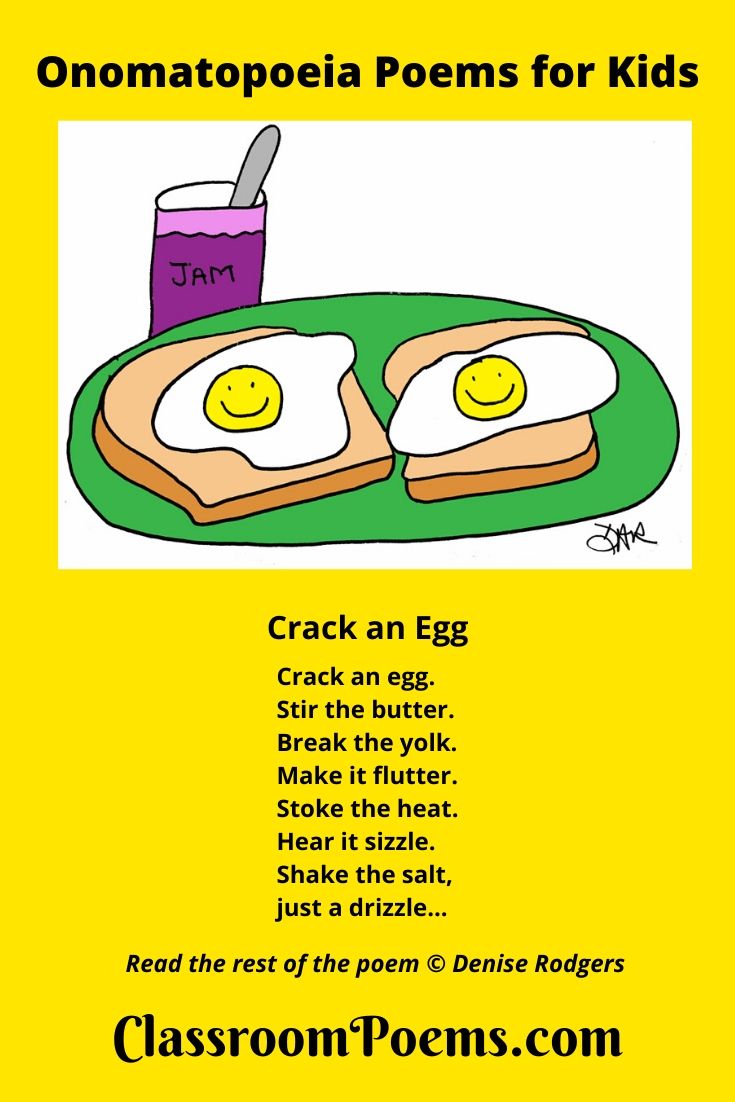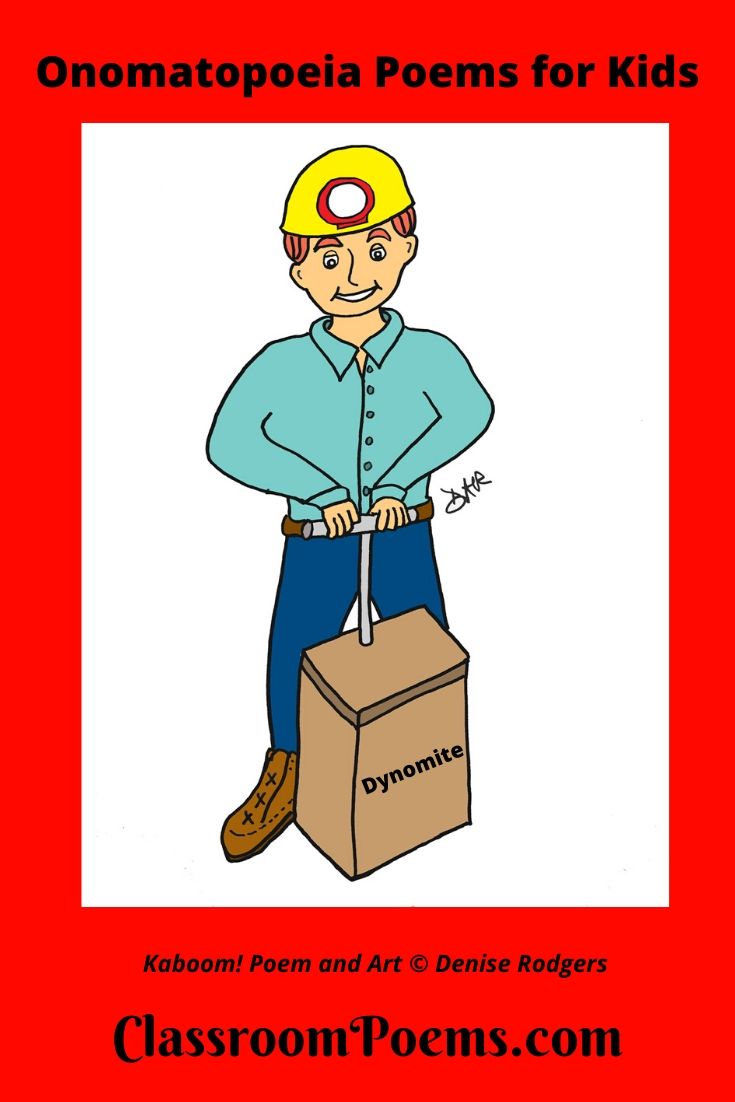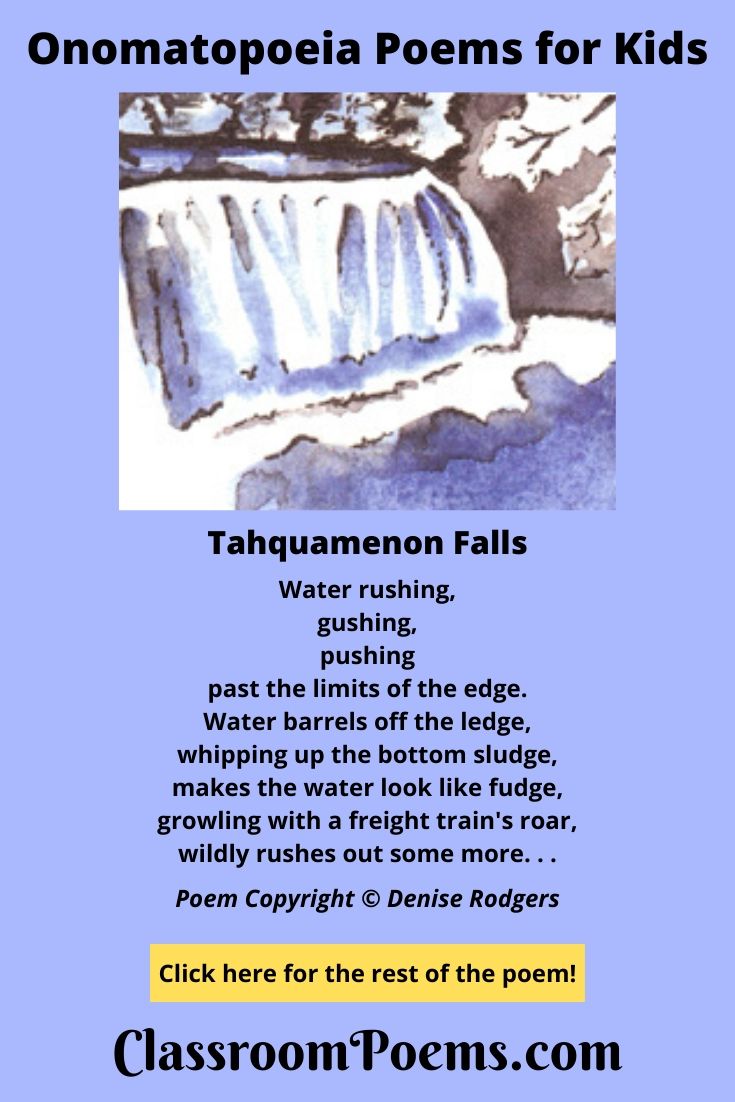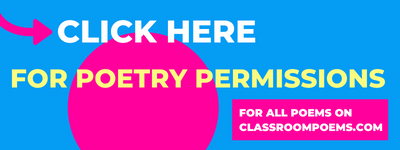Onomatopoeia Poems
What are onomatopoeia poems? They are poems that make use of onomatopoeia, those words that sound like what they describe…for example: bang, boom, crash, tinkle, crinkle, pop, crack, sizzle, and so many more. These words paint both a visual and a sound picture for the reader. The first of the Onomatopoeia Poems is Crack an Egg, first published in my book, A Little Bit of Nonsense.
Crack an Egg
Crack an egg.
Stir the butter.
Break the yolk.
Make it flutter.
Stoke the heat.
Hear it sizzle.
Shake the salt,
just a drizzle.
Flip it over,
just like that.
Press it down.
Squeeze it flat.
Pop the toast.
Spread jam thin.
Say the word.
Breakfast's in.
Poem and Art by Denise Rodgers
Copyright©Denise Rodgers
Permissions
Defining Onomatopoeia
The first challenge of Onomatopoeia Poems is learning how to spell them. Once you get that down, you can feel very smart (and impress your friends). After that, you can put onomatopoeia to work for you. If you say, "That's Greek to me," you're absolutely right. According to Merriam-Webster online, "onomatopoeia" is derived from the Greek words "onomat" and "poien," translating roughly into "to make names." A clearer definition would be that onomatopoeia is the use of words that sound like what they describe. A few examples would be: buzz, clink, tinkle, gasp, bubble... well, you get the idea.
Onomatopoeia Poem #2
The title of the next poem says it all. "Kaboom." It is a poem about miners. It's from my book, Great Lakes Rhythm and Rhyme.
KABOOM!
Kaboom!
Ka-blast
Way in the past
the miners mined for ore.
They searched for copper, iron and salt,
for that and much, much more.
Kaboom!
The bite
of dynamite
cut deep inside the earth.
The charge explodes revealing lodes
of minerals of worth.
Kaboom!
The dust,
the air so mussed
went swirling through the sky.
It was a sight, the dynamite
that made the mountains fly.
Kaboom!
The earth
was filled with mirth
so tickled by the boom.
The miner's pleasure,
each newfound treasure
that followed each
Kaboom!
Poem and Art by Denise Rodgers
Copyright©Denise Rodgers
Permissions
Onomatopoeia Poem #3
The next poem is also from Great Lakes Rhythm and Rhyme. It is all about the Tahquamenon Falls in the Upper Peninsula of Michigan. (These falls were also the inspiration for Henry Wadsworth Longfellow's famous poem, Hiawatha.) Listen to all the "whooshing," "gushing," "roars," and more to "hear" the onomatopeia.
Tahquamenon Falls
Water rushing,
gushing,
pushing
past the limits of the edge.
Water barrels off the ledge,
whipping up the bottom sludge,
makes the water look like fudge,
growling with a freight train's roar,
wildly rushes out some more.
You could harness all the power
as it flashes hour by hour
and will never, ever stop,
thickly loaded from the top.
Water flowing, swiftly whooshing,
always whisking, always pushing
to the river down below,
always rushing, never slow,
till it falls right past the islands,
gives it just another try and
with a mild and calming quiver,
it becomes a simple river.
It's amazing if you spy it;
all that noise and then the
Quiet.
Poem and Art by Denise Rodgers
Copyright©Denise Rodgers
Permissions
Art by Julie Martin
Write Your own Onomatopoeia Poem
If you are interested in writing a poem using onomatopoeia, give it a try. It's a lot of fun. Pick a topic that makes sound, of course. Think of all the words that describe the sound. Make a list and then sit down in a comfy place and start to write. I'm sure you'll find that your poem will have a lot of life -- and paint a very vivid picture.










